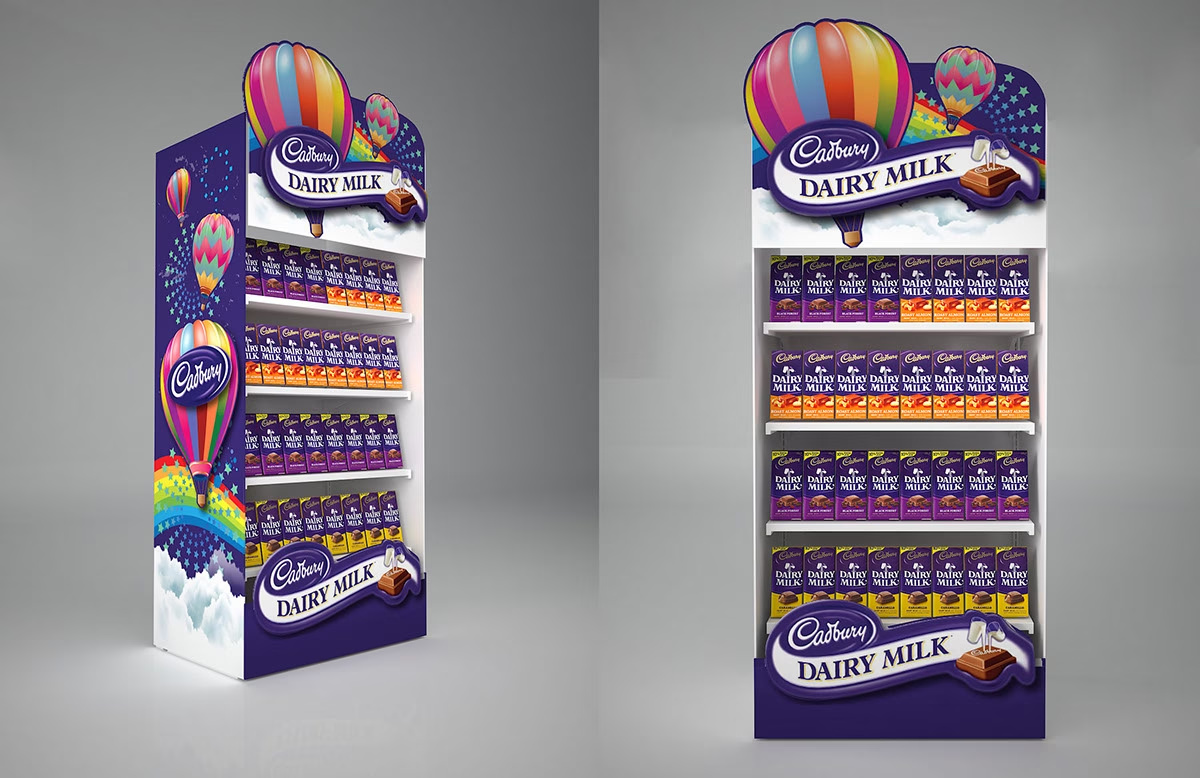Introduction: What Is a Burning Platform? Most businesses don’t change because they want to. They change because they have to.…
Convenience Culture: A Comparison of Prepared Food and Beverage Selection, Merchandising, and Consumer Appeal in Japan vs. the U.S.
In the world of convenience retail, Japan’s konbini (convenience stores) stand out globally for their carefully curated offerings, innovative product rotation, and high consumer loyalty. In the United States, large convenience store chains like 7-Eleven, Circle K, and Casey’s General Store play a similar role in catering to busy lifestyles, albeit with a different focus and approach. Let’s explore the contrasts in selection, merchandising, and consumer appeal of prepared food and beverage items between Japanese and American convenience stores, and examine the emerging trends that redefine convenience shopping in both countries.
Selection of Prepared Foods and Beverages
Japan: A Diverse and Innovative Range
Japan’s convenience stores are renowned for offering a wide selection of high-quality, freshly prepared foods. You’ll find an extensive variety of options, from onigiri (rice balls) and freshly made bento boxes to seasonal items like sakura (cherry blossom) sweets and hot snacks that change with the time of year. Ready-to-eat sandwiches, fresh salads, noodles, and an impressive variety of beverages, including teas, coffees, and unique flavored drinks, line the shelves in neatly organized sections.
Japanese consumers value convenience stores as a reliable place for satisfying meals at any time of day, so stores constantly rotate products based on trends, seasons, and consumer preferences. This approach fosters customer excitement and loyalty as they return to discover what’s new or seasonal. Quality and freshness are top priorities, and new items are often introduced weekly to keep the experience exciting and varied.
Best-Selling Items in Japanese Convenience Stores
The best-selling items in Japan’s convenience stores reflect a blend of local culinary tastes and high standards of freshness:
- Onigiri (rice balls): Simple yet filling, these rice balls come with various fillings like salmon, plum, or tuna, and are often a top choice for commuters and students.
- Bento boxes: Pre-packaged meals with rice, meat, vegetables, and pickled sides are immensely popular and offer a nutritious option at an affordable price.
- Instant noodles: Both affordable and convenient, instant noodles are a staple, with options ranging from traditional flavors to seasonal and regional specialties.
- Matcha and Green Tea Beverages: Reflecting Japan’s tea culture, green tea in various forms—iced, hot, or bottled—dominates beverage sales.
- Desserts and sweets: Japan’s konbini offer a rotating selection of sweets, including mochi, seasonal pastries, and parfaits, which are highly popular among younger demographics.
- Fruit sandwiches, or “fruit sando” (フルーツサンド), are a beloved Japanese treat that capture the essence of simplicity and seasonal freshness. This unique dessert sandwich pairs pillowy-soft “shokupan”, a Japanese milk bread, with generous layers of lightly sweetened whipped cream and vibrant fresh fruits like strawberries, bananas, or seasonal picks such as kiwi, peach, and mango. The bread, subtly sweet and incredibly fluffy, is the perfect backdrop for the whipped cream’s delicate texture and the juicy burst of ripe fruit. What makes “fruit sando” so special is how they elevate everyday ingredients into a visually beautiful, mouthwateringly fresh treat.
In Japan, “fruit sando” are enjoyed everywhere from convenience stores to local cafes to upscale fruit shops, each serving their own variation that celebrates the natural flavors and colors of the fruits. They’re crafted with an almost artful precision: fruit is often sliced and arranged in specific patterns so that each bite reveals a stunning cross-section, making these sandwiches both a feast for the eyes and the taste buds. Beyond aesthetics, “fruit sando” are a reminder of the Japanese philosophy of respecting and enhancing simple ingredients. They embody the joy of seasonal eating, offering a quick but unforgettable dessert experience that perfectly balances light sweetness with the natural freshness of fruit.
U.S.: Practical and Familiar Staples
American convenience stores have traditionally been associated with staple items like cigarettes, beef jerky, salty snacks, and grab-and-go foods such as frozen burritos, petrified hot dogs on rollers, and microwavable sandwiches. While these items are still prevalent, there has been a gradual shift in recent years toward offering fresher, healthier choices to cater to evolving consumer tastes. Hot dogs, pizza slices, burritos, and sandwiches remain common staples, albeit often more tasty and better looking options, with some chains adding salads, wraps, and fresh fruit cups.
While there is some rotation of seasonal or limited-time items in U.S. stores, the selection remains relatively stable year-round. Beverage choices are often dominated by sodas, coffees, and energy drinks, with fewer unique or seasonal options compared to Japan’s extensive beverage selection. However, chains are making an effort to broaden their appeal with premium coffee options and healthier drink choices, trying to keep pace with fast-casual restaurants and coffee shops.
Best-Selling Items in U.S. Convenience Stores
The best-selling prepared food and beverage items in U.S. convenience stores emphasize practicality and portability:
- Hot dogs: Typically found on rollers, hot dogs are an iconic convenience store item that remains a top seller for their affordability and ease of consumption.
In recent years, U.S. convenience stores have expanded their hot dog offerings, introducing a wider variety of flavors and higher-quality options to meet evolving consumer preferences.Chains like 7-Eleven have enhanced their menus with all-beef hot dogs and a diverse array of toppings, including jalapeños, onions, and specialty sauces, allowing customers to customize their meals. Similarly, QuikTrip (QT) has been recognized for its quality hot dogs, featuring 100% all-beef Oscar Mayer wieners and a selection of toppings that elevate the traditional convenience store experience.
This trend reflects a broader shift in the convenience store industry, where there’s a growing emphasis on offering fresh, high-quality food options.
By diversifying their hot dog selections and improving ingredient quality, these establishments aim to attract a wider customer base seeking quick yet satisfying meal choices.
- Pizza slices and burritos: These are favored for their quick-serve appeal and are often pre-made and kept warm, making them accessible for people on the go.
In recent years, U.S. convenience stores have significantly enhanced their ready-to-eat pizza and burrito offerings, focusing on improved quality and variety to meet evolving consumer preferences.
Pizza Slices: Many convenience stores now offer freshly prepared pizza slices with diverse toppings and crust options. For example, Casey’s General Stores, operating primarily in the Midwest and South, has become known for its made-from-scratch pizzas, offering varieties like pepperoni, sausage, and specialty combinations. Similarly, 7-Eleven has expanded its pizza menu to include options such as meat lovers and supreme, aiming to provide a quick yet satisfying meal for customers.
Burritos: Convenience stores have also diversified their burrito selections, emphasizing authentic flavors and quality ingredients. Allsup’s, a chain in the Southwest, is renowned for its deep-fried beef and bean burritos, a staple for many customers. In celebration of its 50th anniversary, Allsup’s introduced a pepperoni pizza burrito, blending traditional burrito elements with pizza flavors to offer a unique option.
This focus on enhancing ready-to-eat pizza and burrito offerings reflects a broader trend in the convenience store industry to provide higher-quality, diverse food options that cater to customers seeking quick and satisfying meals.
This shift towards offering higher-quality and varied pizza and burrito options reflects a broader trend in the convenience store industry to cater to customers seeking quick, satisfying, and diverse meal choices.
- Coffee: In the U.S., convenience stores are experiencing a notable shift in their ready-to-drink (RTD) hot coffee offerings, driven by evolving consumer preferences and market dynamics. Key trends include:
- Expansion of RTD Coffee Lines: Major convenience store chains are broadening their RTD coffee selections to cater to diverse tastes. For instance, 7-Eleven introduced a new line of flavored RTD coffee beverages, reflecting a significant shift towards offering higher-quality products to meet evolving consumer preferences.
Emphasis on Quality and Customization: Consumers are increasingly seeking premium coffee experiences, even in convenience settings. Brands like White Bison have launched RTD coffee lines, such as their Snapchill RTD coffee, which has become one of their top products, showing the highest sales increase over the past year. This indicates a consumer gravitation towards higher-quality, convenient coffee options.
Health-Conscious Offerings: There’s a growing demand for RTD coffees with functional benefits, such as added protein or reduced sugar content. Brands are responding by introducing beverages that align with health trends, appealing to consumers seeking both convenience and wellness.
- Expansion of RTD Coffee Lines: Major convenience store chains are broadening their RTD coffee selections to cater to diverse tastes. For instance, 7-Eleven introduced a new line of flavored RTD coffee beverages, reflecting a significant shift towards offering higher-quality products to meet evolving consumer preferences.
These trends highlight a dynamic shift in the convenience store RTD hot coffee market, with a clear focus on quality, variety, health, and sustainability to meet the changing preferences of consumers.
- Energy drinks and sodas: From brands like Monster, Red Bull, and Pepsi, these drinks remain essential sales drivers for people seeking a quick caffeine boost.
- Packaged sandwiches and wraps: These are increasingly popular among consumers looking for a more filling, fresh alternative to typical gas station snacks.
Merchandising and Store Layout
Japan: An Organized, Efficient Shopping Experience
Japanese konbini are carefully organized to enhance the shopping experience. Food items are sorted into clear, easily accessible sections: hot foods, bento boxes, snacks, and refrigerated items are all grouped logically, making it easy for customers to find what they need. Stores are compact, yet they manage to provide a large variety of products through efficient use of space, often including microwaves and utensils for those who wish to eat on-site. Each item has a designated place, and the layout is designed for a quick, seamless grab-and-go experience.
Japan’s merchandising style reflects the cultural preference for simplicity and order, with minimalistic, clean displays that emphasize quality and freshness. Even in a quick-stop environment, the layout conveys a sense of calm and attention to detail, enhancing the appeal of convenience stores as a high-quality choice for meals.
U.S.: Maximizing Impulse Purchases
In the U.S., convenience store layouts prioritize impulse purchases, with displays often placed at eye level and hot food items centrally located for easy access. Hot food cases, large drink coolers, and snack racks are strategically positioned to encourage last-minute additions to a shopper’s purchase. Beverage promotions frequently dominate the front entrance, catching the eye of customers as they enter.
While U.S. stores may not have the same compact and ultra-organized feel as their Japanese counterparts, they excel at merchandising that targets impulse buyers. However, some chains are experimenting with more organized layouts and enhanced lighting to highlight fresh and premium items. This shift could signal an adaptation inspired by the high standards set by Japanese konbini.
Innovation in U.S. Chains like Buc-ee’s, Wawa, and Sheetz
U.S. convenience chains like Buc-ee’s, Wawa, and Sheetz are at the forefront of innovation, bringing a new level of quality and experience to the American convenience store model. Buc-ee’s, particularly known in Texas and the Southeastern U.S., has redefined convenience with its massive stores that offer an expansive range of freshly prepared foods, regional specialties, high-quality barbecue, and extensive retail selections, from home goods to clothing. Wawa and Sheetz have focused on gourmet-quality food options, offering customizable, made-to-order sandwiches, salads, and specialty coffees, allowing them to compete with fast-casual restaurants. These stores also emphasize a pleasant shopping experience, with modern, well-organized layouts and tech-enabled ordering kiosks that streamline the customer experience. This innovation in product quality, variety, and customer service is reshaping consumer expectations in the U.S. and pushing the boundaries of what convenience stores can offer.
Consumer Appeal
Japan: Quality, Variety, and Loyalty
Convenience stores in Japan are an integral part of everyday life, appealing to office workers, students, travelers, and families alike. Customers don’t just see konbini as a place to grab snacks; they see them as a trusted source of fresh, high-quality meals. This expectation of quality, combined with frequent new offerings, keeps customers coming back regularly. Japanese konbini are held to near-restaurant standards, with an emphasis on customer service and consistent quality.
Consumers are loyal to convenience store brands, partly because they know that each visit will yield fresh, tasty options. This loyalty is bolstered by targeted promotions, seasonal launches, and the assurance that they’re getting good value and quality with each purchase. Japanese convenience stores have long focused on offering high-quality fast food at affordable prices, making them a popular option for busy individuals seeking both value and taste.
U.S.: Convenience and Practicality
In the U.S., convenience stores are typically viewed as a practical solution for coffee, snacks, and quick meals on the go, often located along highways or in areas where fast-food chains also operate. Convenience stores cater primarily to commuters, travelers, and workers looking for a quick, affordable option.
Although perceptions are shifting with the introduction of fresher, healthier choices, U.S. convenience stores still lack the same level of quality association that Japanese stores enjoy. U.S. consumers are more likely to visit for convenience than loyalty to a specific brand, though younger demographics are beginning to appreciate the evolution of fresh food offerings. Major chains are working to reposition themselves with premium food and beverage options to appeal to these changing tastes.
Consumer Culture and Expectations
Japan: High Standards for Variety and Freshness
In Japan, the role of convenience stores extends beyond convenience; they are seen as an essential service provider that meets high expectations for quality, seasonal variety, and continuous innovation. The demand for new and seasonal products, combined with Japan’s busy urban lifestyle, drives this expectation, making convenience stores a frequent choice for affordable meals that don’t sacrifice quality.
U.S.: Growing Expectations for Quality
While American consumers traditionally viewed convenience stores as places for fuel, snacks, and basic necessities, there is an increasing demand for fresh, high-quality options. U.S. chains are responding by introducing more diverse selections and experimenting with limited-time offers. This evolution shows potential for U.S. convenience stores to capture a similar level of loyalty and consumer trust as their Japanese counterparts, although the journey to match Japan’s high standards may still be in progress.
The contrasts between Japan’s and the U.S.’s convenience store models highlight how cultural values, consumer expectations, and strategic focus shape each approach. In Japan, convenience stores meet high standards of variety, freshness, and innovation, with merchandising that supports a fast, efficient shopping experience. In the U.S., convenience stores are embracing a gradual evolution, adding premium and fresh food items to broaden their appeal.
As convenience stores in the U.S. adapt to meet rising consumer expectations, Japan’s model serves as a fascinating blueprint for how they might evolve further. From product innovation to quality-driven merchandising, American chains may find valuable insights in the success of Japan’s konbini culture. Whether the U.S. convenience store model will fully embrace the depth of Japan’s approach remains to be seen, but the appetite for innovation is clearly there.







